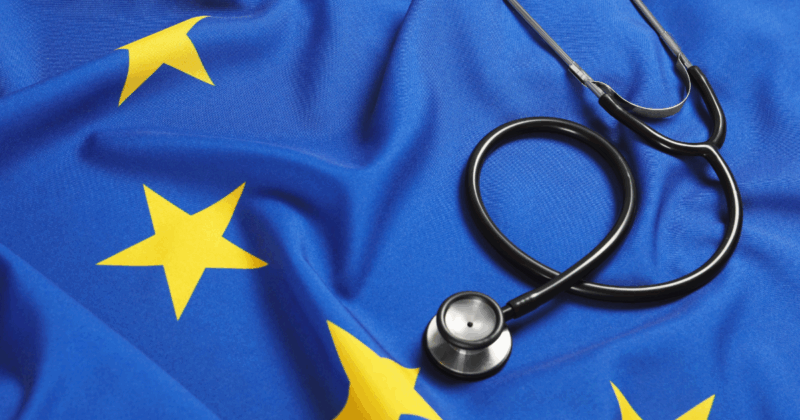India and the World of Pharmaceuticals: Innovation & Manufacturing
- ankitmorajkar
- May 2
- 6 min read
Updated: Sep 8
The global pharmaceutical industry, valued at approximately $1.6 trillion in 2023, sits at the intersection of science, innovation, regulation, and global public health. Over the past two decades, this sector has witnessed massive growth, with significant contributions from both developed and emerging economies. India, often referred to as the “pharmacy of the world,” has emerged as a vital pillar in this ecosystem; thanks to its robust manufacturing capabilities, competitive cost structure, and growing R&D presence.

The Global Pharma Landscape: A Market Dominated by the Few
Pharmaceutical revenues worldwide have steadily climbed from under $400 billion in 2001 to over $1.6 trillion in 2023.
Despite this exponential growth, the market remains geographically concentrated. The United States alone accounts for a staggering 47% of global pharmaceutical revenues, followed by Europe at 14%. India’s share, though relatively modest at 1.7%, belies its outsize impact in terms of volume, exports, and cost-effective production.
India has cemented its role as a global pharmaceutical powerhouse, particularly in the generics segment. The country supplies over 20% of the world’s generic drugs and manufactures one-third of all medications consumed in the United States. With a growing role in drug development, regulatory compliance, and clinical trials, India’s pharmaceutical sector is no longer just a back-end factory but an integral part of the global drug value chain.
Innovator vs. Generic: Understanding the Pillars of the Industry

The pharmaceutical market is broadly divided into three categories:
Innovator Drugs: These are new, proprietary drugs developed through years of research and protected by patents. The exclusivity period typically spans around 20 years from the date of patent filing. This category commands about 65% of the global market by value, driven largely by R&D-centric companies in the U.S. and Europe.
Branded Generics: Once a drug’s patent expires, other manufacturers can enter the market with the same molecule. When sold under a brand name, such as Dolo or Crocin (both paracetamol), these are called branded generics. These maintain some brand loyalty despite being chemically identical to generics.
Unbranded Generics: These are the same molecules sold without a proprietary brand. For example, generic paracetamol tablets sold under the compound name alone.
Innovator drugs require enormous investment in R&D, ranging from 13% to 30% of a company’s revenue. For instance, top pharmaceutical companies such as Roche, J&J, and Novartis invest billions annually to develop the next generation of breakthrough drugs.
In contrast, Indian companies typically invest less (e.g., Biocon at 9.6%, Zydus Lifesciences at 7%, Sun Pharma at 5.5%), focusing instead on generics and biosimilars.
The Pharma Lifecycle: From Molecule to Market

Drug development is a long and capital-intensive journey involving several complex stages:
Drug Discovery: Identification of a target compound through disease biology and chemical screening.
Preclinical Trials: In-vitro and animal studies to evaluate safety and biological activity.
Clinical Trials: Phase 1: Safety trials on healthy volunteers. Phase 2: Efficacy and dose determination on a small group of patients. Phase 3: Large-scale trials to establish safety and effectiveness.
Regulatory Approval: Filing of New Drug Applications (NDAs) with regulators like the US FDA.
Manufacturing: Scale-up under strict GMP (Good Manufacturing Practice) compliance.
Commercialization: Marketing and distribution through a combination of medical reps, wholesalers, and pharmacies.
Post-Marketing Surveillance: Monitoring long-term safety and side effects after the drug hits the market.
Interestingly, the majority of investment is front-loaded, before a single dollar of revenue is earned, making drug development one of the riskiest commercial endeavors.
R&D: Where Innovation Meets Outsourcing
The journey from target identification to drug approval takes more than a decade, and the odds of success are low. Only ~20% of drugs entering Phase 2 and ~70% of Phase 3 drugs succeed. Hence, pharmaceutical companies increasingly outsource various components of the R&D process to reduce costs, access specialized skills, and speed up timelines.
The Drug Discovery Pipeline

Target ID → Hit → Lead → Preclinical → Clinical Trials → Approval
Patents are usually filed at the Lead Optimization stage, triggering a 20-year countdown.
However, with 7–12 years consumed in R&D, companies strive to launch drugs quickly to maximize the patent-protected revenue window.
India’s Growing Role in Pharma R&D

India has become a favored destination for global pharma players seeking R&D support. A vibrant CRO (Contract Research Organization) ecosystem includes:
Syngene: Drug discovery and custom synthesis.
Divi’s, Laurus Labs, Suven, Glenmark Lifesciences: Specialize in contract synthesis and intermediates.
IT services firms (HCL, Cognizant, TCS): Support clinical data management, lab automation, and software development for clinical systems.

Even Indian pharmaceutical companies like Biocon and Sun Pharma are investing in early-stage drug discovery, although they often partner with multinational companies beyond Phase 2 or 3 for regulatory submissions and global commercialization.
Generics and the ANDA Game
When a branded drug loses its patent protection, it is open for generic competition. In the U.S., companies file an Abbreviated New Drug Application (ANDA) for such generics. These applications require bioequivalence studies but do not mandate full clinical trials.
New Drug Applications (NDAs): Required for entirely new chemical entities.
ANDA Approvals: 700–900 annually in the U.S., with Indian firms securing a sizable share.
In 2021, Indian companies received 210 out of 640 total ANDA approvals (~33%). In 2024, that number rose to 284 out of 618 (~46%). This underscores India’s dominance in the generics value chain.
With 300+ products going off-patent each year, global pharma companies face revenue risks between $50 to $100 billion annually. This “loss of exclusivity” creates significant opportunities for generic manufacturers to step in and fill the demand.
Companies like Biocon spent 9.6% of their revenue on R&D in 2022, while Zydus and Sun Pharma followed with 7% and 5.5%, respectively.

Drug manufacturing in India follows a multi-step process:
Key Starting Materials (KSM) → Intermediates → Active Pharmaceutical Ingredients (APIs) → Finished Dosage Forms (FDF)
However, it is a tightly regulated space, especially for exports to regulated markets. Manufacturers must submit a Drug Master File (DMF) detailing their production processes. Plants are subject to audits by regulators like the US FDA. An adverse Form 483 is issued when compliance issues are found and can severely impact a company’s credibility and stock price.
In 2024, 43 Form 483 letters were issued globally, with 12 targeting Indian facilities, highlighting the importance of continuous compliance and quality assurance.
CRAMS: India’s $21 Billion Opportunity
Contract Research and Manufacturing Services (CRAMS) is a booming sector in India, valued at $21 billion in 2023. It consists of:
CROs: Handling early drug discovery, preclinical research, and clinical trial support.
CDMOs: Providing end-to-end drug manufacturing, formulation, and packaging services.
Key players include Divi’s Labs, Aarti Drugs, Syngene, Neuland, Glenmark Lifesciences, and Solara. India’s advantages — lower manufacturing costs, skilled workforce, strong IP laws, and growing global demand for generics — make it an attractive CRAMS destination.
However, India still depends heavily on China for raw materials. In FY2022, India imported over ₹35,000 crore worth of APIs and bulk drugs from China, accounting for ~64% of API imports. Policy initiatives such as the PLI (Production Linked Incentive) scheme aim to reduce this dependence and strengthen domestic manufacturing of key intermediates.
Commercialization and Marketing: Reaching the Prescribers
Once a drug is approved, the next challenge is market penetration. Pharma companies deploy medical representatives to educate doctors about new drugs. Direct-to-consumer advertising is not permitted in India for prescription drugs, making the role of medical reps vital.

Revenue distribution along the pharma value chain is typically:
Manufacturers: 60–70%
Distributors: 10–15%
Retailers: 20–30%


India’s domestic market includes both multinational firms (Pfizer, GSK, Sanofi) and homegrown players (Sun Pharma, Lupin, Zydus). A growing chunk of revenues comes from exports, particularly to the U.S. and other regulated markets.
Therapeutic Trends and Regulatory Landscape


The Indian pharma market is skewed toward chronic therapies, like diabetes, cancer, and cardiovascular diseases, which are high-growth segments. In contrast, acute therapies such as flu or fever offer lower margins and growth potential.
The regulatory landscape includes:
NPPA (National Pharmaceutical Pricing Authority): Governs pricing for essential medicines under the National List of Essential Medicines.
Over-The-Counter (OTC) Drugs: Can be marketed directly to consumers.
Prescription Drugs: Must be promoted through doctors and not advertised to the general public.
Conclusion: The Road Ahead for Indian Pharma
India’s pharmaceutical sector stands at a pivotal moment. While its role in generics and contract manufacturing is undisputed, the future will see a shift toward innovation, biologics, and value-added services. Strategic partnerships, regulatory compliance, and investment in R&D will be key differentiators.
As global pharma grapples with rising costs, patent cliffs, and shifting therapeutic landscapes, India’s agile, cost-efficient, and increasingly quality-driven ecosystem is well-positioned to take center stage and not just as the world’s pharmacy, but as a global innovator in its own right.
Analysis Credits — Yadnya Investment Analysis





Comments